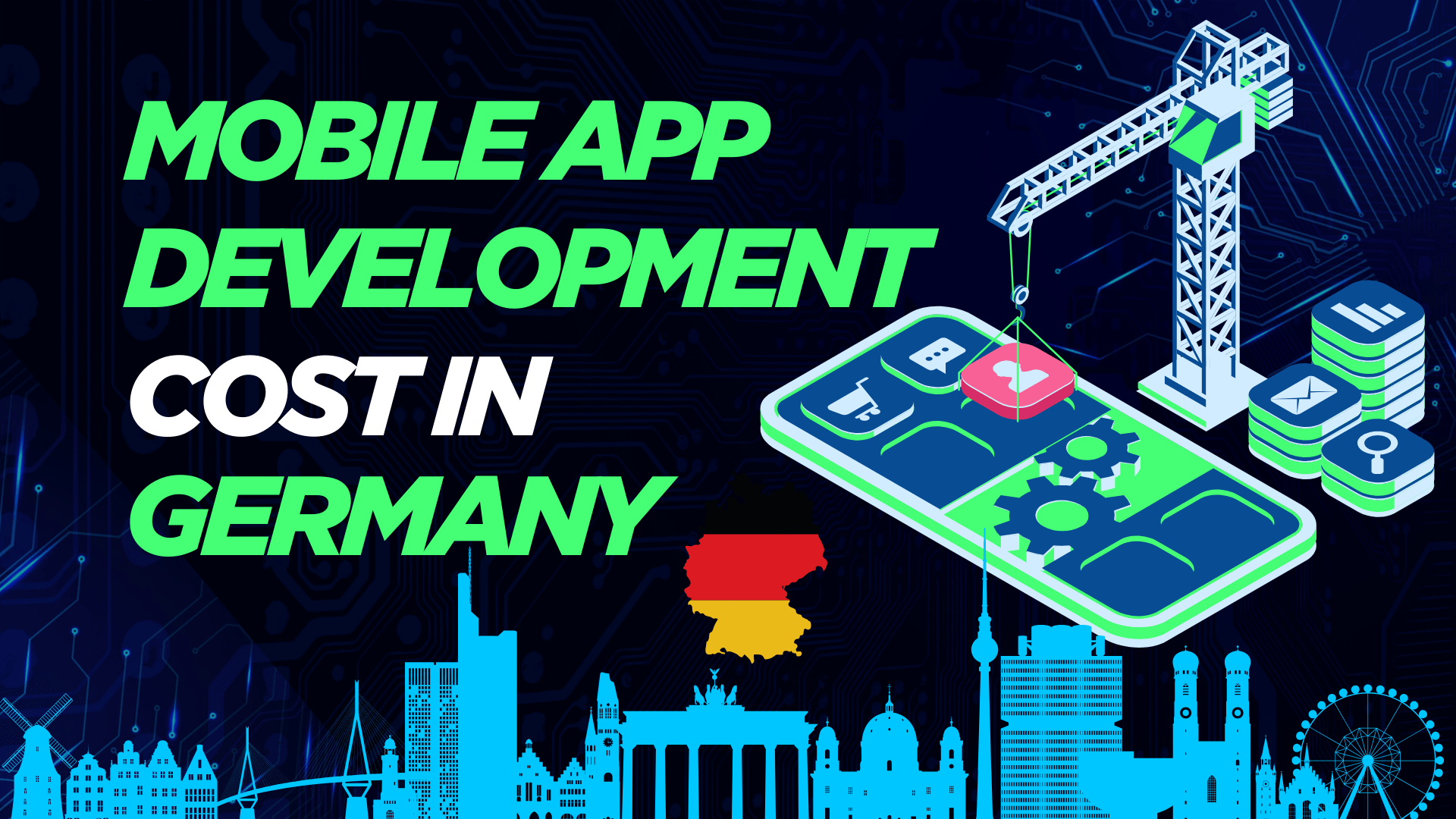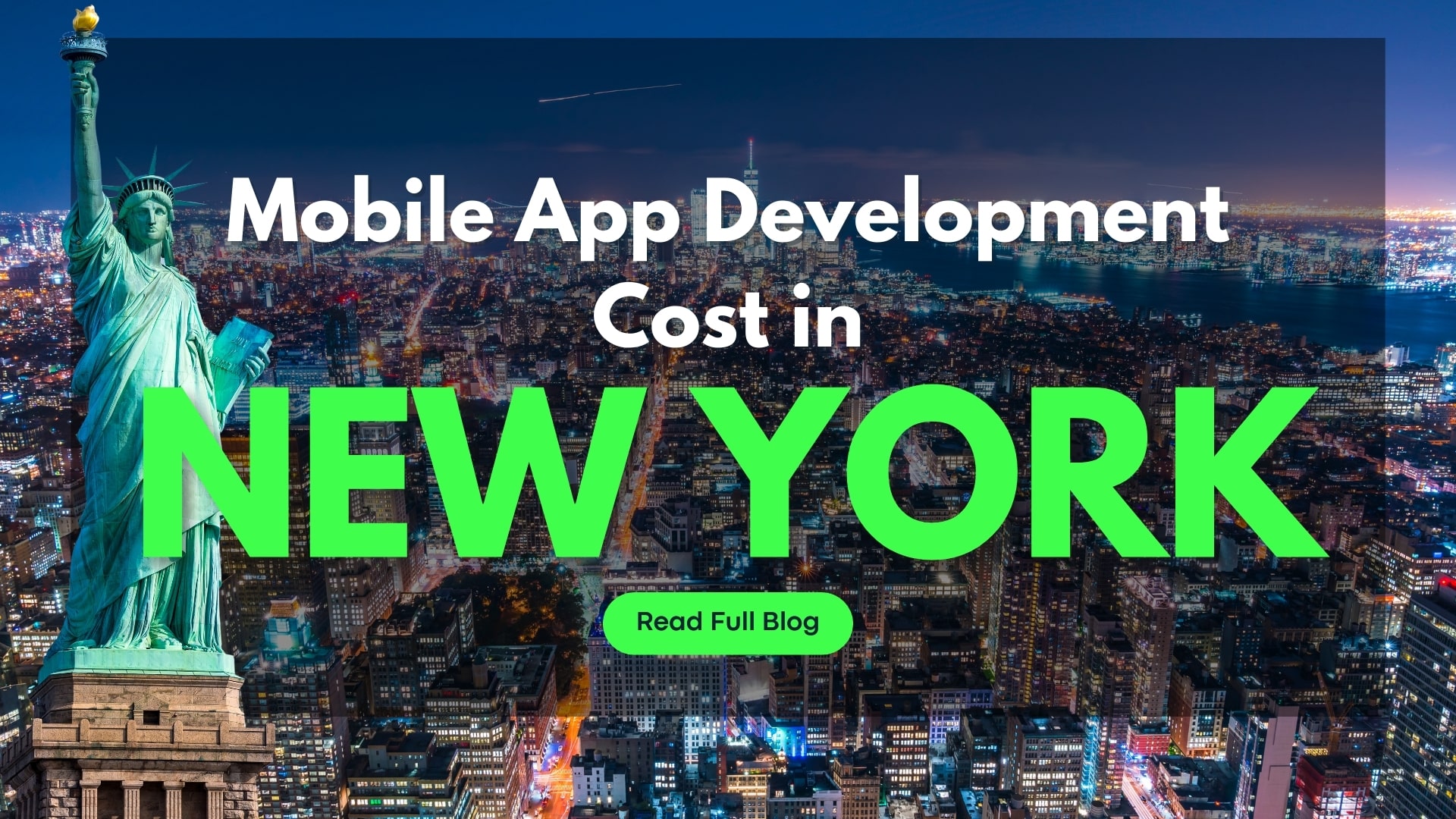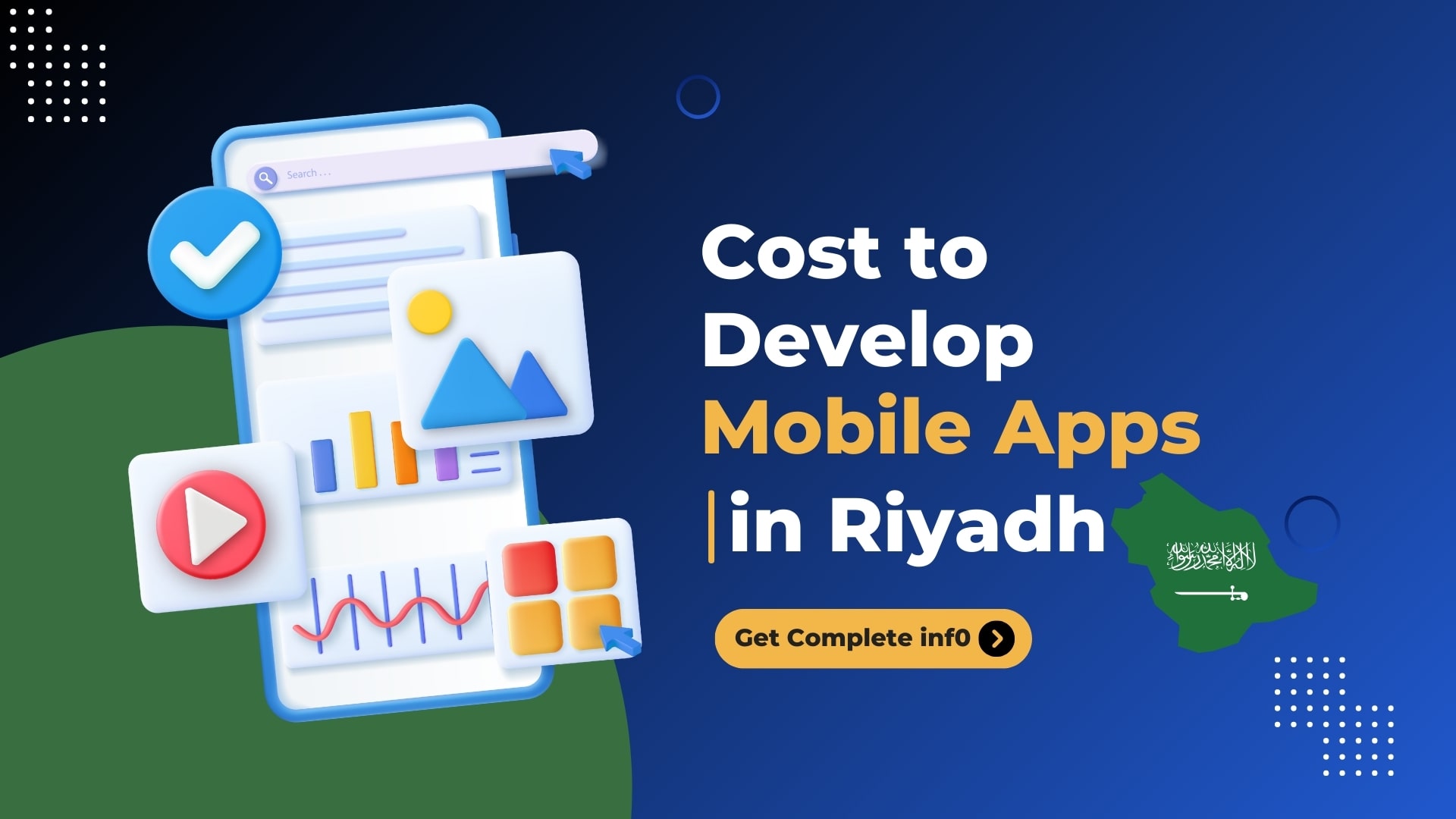How Much Does It Cost to Develop a Mobile App in Germany?
The development of a mobile application in Germany is not just coding; it is an investment that depends on many factors: from complexity and features to the development team’s expertise. Whether you are a startup with a fresh idea or an enterprise looking to expand digitally, the cost dynamics become crucial. Mobile App Development Cost in Germany usually range between €5,000 to over €200,000. Price is dependent on the platform, whether iOS, Android, or a combination of both; UI/UX design; backend infrastructure; and maintenance. But what exactly does it cost? In this blog post, we will help you understand the essentials of cost component comparison, different approaches to development, and how to budget it.
Table of Contents
ToggleMarket Statistics of Mobile App Development in Germany in 2025
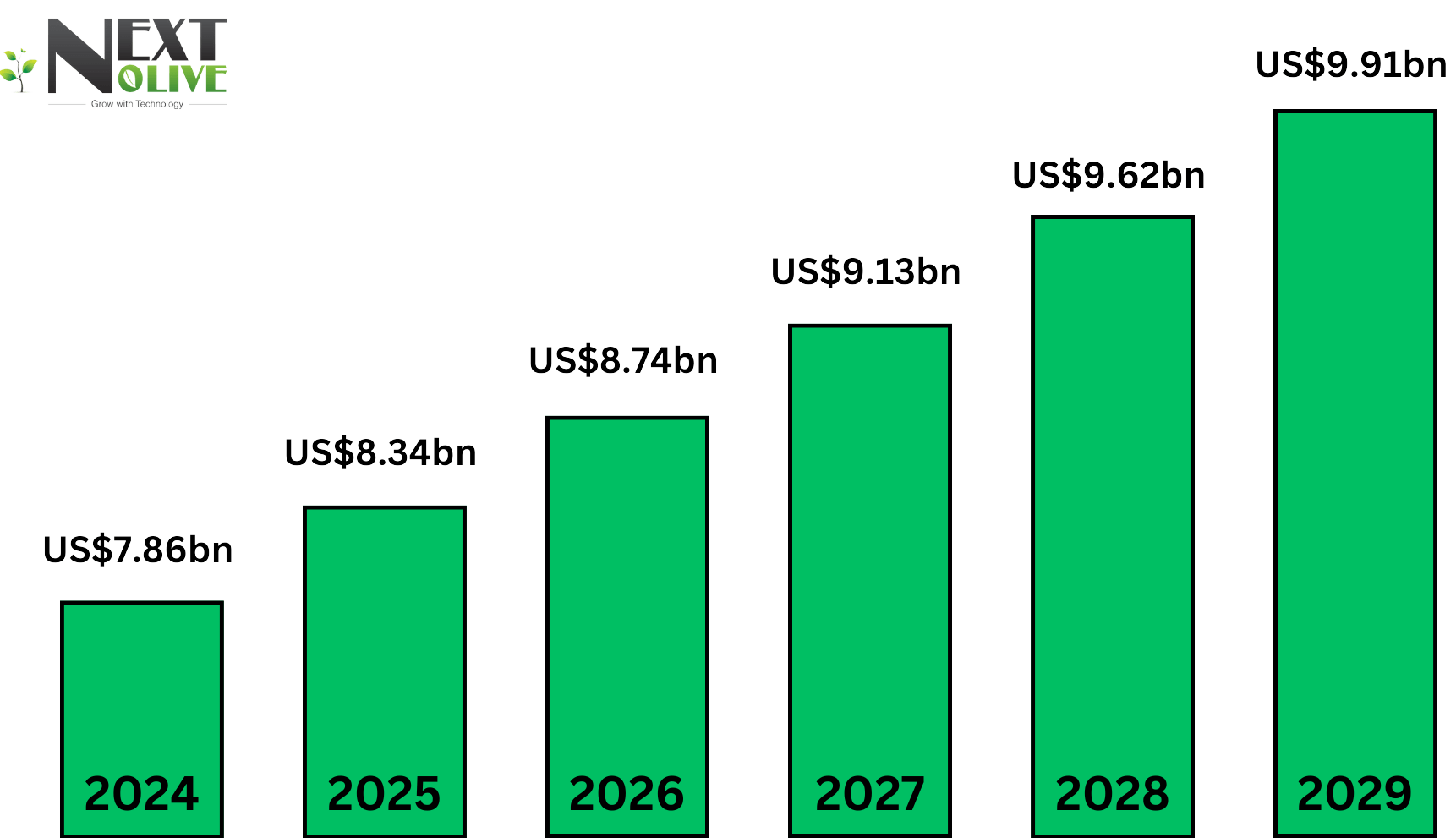
As per the report by Statista, the market cap of mobile app development in Germany is expected to be $8.34Bn by 2025. With a CAGR of 4.41%, the market cap can reach $9.91Bn by 2029.
Cost of App Development Based on the Type of App
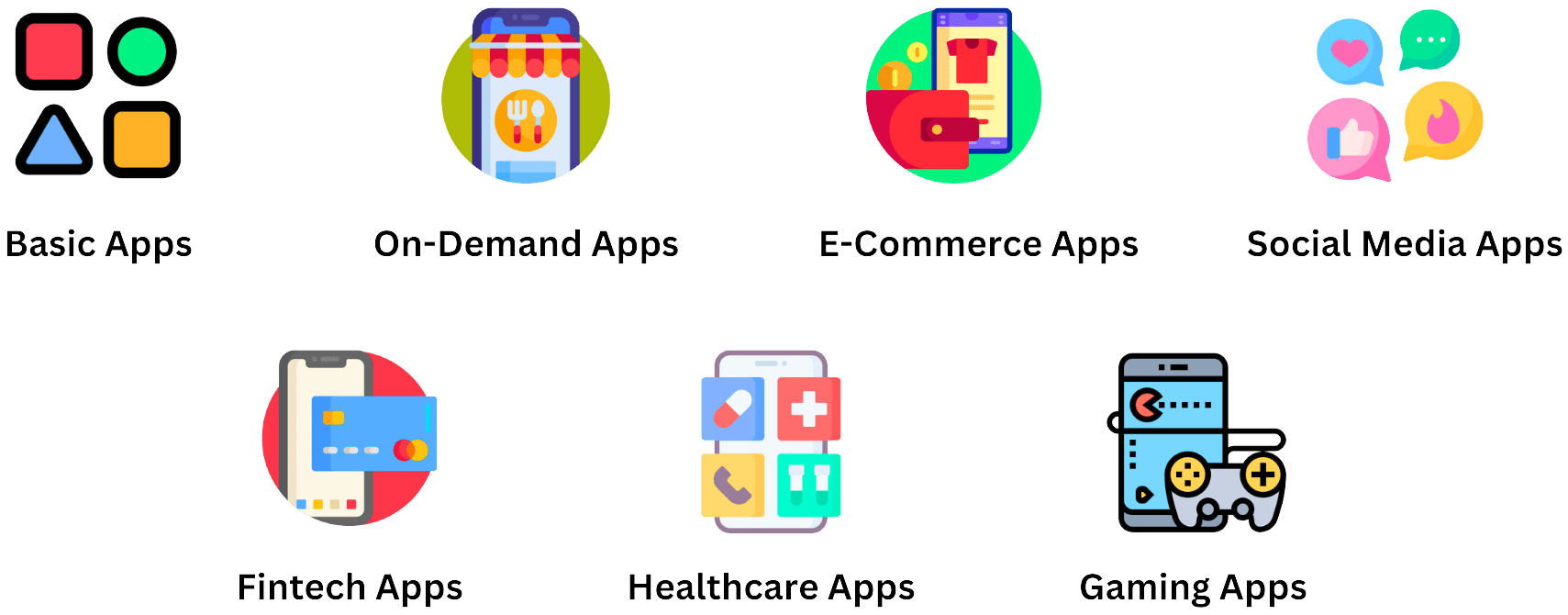
[1] Basic Apps
The most basic apps are the least costly, easiest, and quickest to build. These are applications that often basically show static data or follow the simple logic of functionality, like note-taking applications or a simple calculator or task management application. Therefore, they are faster and less expensive to create because they require much less back-end development and less integration with third-party services. In Germany, the price for a basic app is €4,900 to €30,000 (Approx $5,000 to $32,445), and development time is between 2 to 3 months. These apps are great for businesses or individuals who just want a simple digital presence with no fancy features.
[2] On-Demand Service Apps
On-demand service apps have much more technical requirements than other apps; things like real-time GPS tracking, secure payment integration, push notifications, and multiple user roles with things like customers, providers, and admins. Then some apps are similar to a food delivery service or a taxi booking service, which involves complex back-end development to allow for interactions in real-time between users. The cost of developing an on-demand service app in Germany is between €40,000 and €150,000 (Approximately $41,600 to $154,800) depending on the features and customization. In terms of time, it takes about 3 to 9 months.
[3] E-commerce Apps
Since e-commerce apps are built for online retail businesses, they contain features like product catalogs, user authentication, payment gateways, inventory management, and order tracking. In case requirements go beyond this set of functionalities in terms of AI-driven product recommendations or augmented reality product previews, then its complexity increases. The cost of developing an e-commerce app in Germany is about €30,000 to €150,000 (approximately $30,900 to $154,350), and the period is usually about 3 to 8 months. That calls for business sites to have capabilities that enable competing with big web stores in securing data and good user experience handling.
[4] Social Media Apps
To build a social media or messaging app, more features are now required: user profiles, real-time messaging, media sharing, push notifications, or maybe even AI-driven content recommendations. The complexity of dealing with real-time communications alongside guaranteeing a secure, scalable infrastructure makes such applications so expensive to create. A simple social networking app could run from €50,000 to €300,000 ($51,300 to $308,700) but a full feature with heavy security and AI could cost far higher. The timeline of development is typically around 6 to 12 months, depending on the complexity and integrations required.
[5] Fintech Apps
Fintech applications, including mobile banking, digital wallets, and investment platforms, require the maximum level of security and compliance with financial regulations in the European Union, such as GDPR and PSD2. Fintech apps require features such as biometric authentication, fraud detection, encryption, and smooth third-party API integrations for payments and transactions. Due to the high-security standards, the minimum cost of fintech app development in Germany ranges from €80,000 up to more than €500,000 ($81,989 to over $510,000), while the development takes 6-18 months. Financial institutions and startups investing in fintech products must pay the most attention to security and conformity with the existing regulations to prevent legal risks.
[6] Healthcare Apps
Healthcare and telemedicine apps must adhere strictly to medical regulations, encryption of data, and secure patient-doctor communication. It adds to the complexity and cost of developing video consultations, AI-driven diagnostics, EHR integrations, and appointment scheduling. Since the actual data would also require protection under GDPR and other healthcare regulations, more security measures would be added for cost. A healthcare application in Germany costs anywhere between €70,000 to €400,000 ($76,000 to $435,000) with the development timeframe usually between 6 and 12 months. Healthcare applications today play a major role in managing modern healthcare facilities; they assist with remote health monitoring and patient care.
[7] Gaming Apps
The cost to develop a gaming app is significant and depends upon factors such as 2D vs. 3D graphics, single-player vs. multiplayer modes, and the application of VR and AR. Simple mobile games that are casual will cost around €50,000 to €100,000 ($51,500 to $105,000); however, high-end games that are very advanced and offer some kind of multiplayer experience are over €1,000,000 ($1,020,000). The gaming app development timeline ranges from 6 months to 2 years as more complex requirements are for higher levels of graphics, animation, and AI. Competition in the German market is tough, and quality game development is hugely dependent on good cooperation with competent designers and engineers.
Cost of App Development Based on Technology Stack
[1] Native App Development (Swift for iOS & Kotlin for Android)
Native apps are high-performance and secure but expensive. They are best suited for industries such as fintech, healthcare, and gaming, where user experience is paramount. Since there are different codebases for iOS and Android, the development time and cost are more. In Germany, a simple native app costs €30,000 to €50,000 ($30,746 to $51,243), while complex enterprise apps exceed €100,000 (Approx $112,000).
[2] Cross-Platform Development (React Native, Flutter, Xamarin)
Cross-platform frameworks enable the development of both iOS and Android apps from a single codebase, thus reducing the costs and time taken to develop. They do not have the same performance as native apps, but they are suitable for startups and businesses that have a low budget. The basic cross-platform app in Germany will cost around €20,000 to €40,000 ($20,497 to $44,800), while the more advanced applications will range between €40,000 to €120,000 ($44,800 to $134,400).
[3] Web App Development (React.js, Angular, Vue.js, Node.js)
Web apps are cheaper and can be accessed from any device without requiring any approvals from the App Store. These are commonly used for SaaS platforms, marketplaces, and e-commerce applications. In Germany, a basic web app is €10,000 to €30,000 ($10,363 to $30,746), while more advanced platforms with complex features can cost between €30,000 to €100,000 ($30,746 to $112,000).
[4] Progressive Web Apps (PWA) (React.js, Angular, Vue.js)
PWAs now provide offline capabilities and fast loading but cost less than mobile apps. A good fit for news portals, travel sites, and e-commerce, simple PWAs cost €10,000 to €25,000 ($10,363 to $25,621) in Germany, and feature-rich ones can go up to €80,000 ($89,600).
[5] Backend Development (Node.js, Django, Ruby on Rails, Laravel, Spring Boot)
Backend development is very important for data storage, real-time processing, and APIs. Its cost varies depending on the security, scalability, and complexity required by the database. In Germany, the basic backend costs €10,000 to €30,000 ($10,363 to $30,746), and the enterprise-level systems start from €60,000 to €150,000 (Approximately $61,492 to $156,534).
Cost of App Development Based on Features Included
[1] Basic App (Simple Functionality) – €5,000 to €30,000 (Approximately $5,124 to $30,746)
A basic app will include basic features with minimal backend development and is perfect for companies looking for a simple mobile solution. These apps generally provide user login, basic UI/UX design, static content such as text and images, push notifications, and a simple contact form. Since they do not have any complex functionalities such as real-time interactions or payment gateways, they are less expensive to develop. Most of the basic apps are used for informational purposes. This includes news applications, simple note-taking tools, or business profile apps. Their development timeline is anywhere between a few weeks to a couple of months depending on the requirements of design and the choices of platforms.
[2] Medium Complexity App – €30,000 to €100,000 (Approximately $30,746 to $102,487)
These will be medium-complexity apps, that have more features and require some backend development because of data storage and real-time user interaction. These apps normally have advanced UI/UX designs, user profile management, integration with payment gateway (PayPal, Stripe), social media log in, basic databases, geolocation services, and chat/messaging capabilities. These apps include an eCommerce platform, food delivery, and appointment booking applications. Due to the multiple features, this development timeline lasts between three months and six months. The premium price is related to the following factors: sensitive data handling and API integrations and for a more fine-tuned and polished user experience.
[3] High-End and Complex App – €100,000 to €250,000+ (Approximately $102,487 to over $256,217)
High-end applications require the most modern technologies, huge backend development, cloud storage, AI-based functionality, and much more with higher security. Applications that come in this category may include features like real-time tracking, augmented reality and virtual reality support, AI-based recommendation systems, multiple languages, and end-to-end encryption for safe communication. It can take up to six months to more than a year to build such an app. High-end applications include ride-hailing services such as Uber, advanced fintech solutions, and healthcare applications with AI-based diagnostics. The cost is justified because it requires the involvement of highly skilled developers, data security measures, and integration with third-party services.
Factors Influencing Mobile App Development Cost in Germany
[1] Complexity of the Application
The more complicated an app, the higher its development cost. An application that only features basic functionality such as a calculator or a to-do list is minimal in coding and resources. In contrast, an advanced application that uses AI integration, real-time synchronization, or complex backend processing demands high development, testing, and maintenance costs. The level of user interaction, third-party API integrations, and custom functionalities all add to the overall complexity and budget.
[2] Choice of the Platform
The overall cost is influenced by the choice between developing for iOS, Android, or both. A native application built specifically for iOS in Swift and Android in Kotlin is bound to be costlier as it takes longer to develop and is more technical. Conversely, cross-platform development frameworks like Flutter or React Native allow the developer to code a single set of code, which works across multiple platforms and reduces the overall cost, although performance might be different, and native features could be less accessible.
[3] UI/UX Requirements
An attractive user-friendly design adds user experience but also costs more in development. Simple designs with common UI elements are inexpensive, but special animations, illustrations, and other interactive elements necessitate not only skilled designers but also more development time. The more intricate the app’s navigation, transitions, and micro-interactions, the more costly it will be, as it takes a lot more iterations and user testing to get a seamless experience.
[4] Development Team Location and Expertise
Different hired developers’ base rates differ along with the territory and expertise of the respective team. Typically North American and Europe-based developers or freelancers draw higher prices over Asian or Eastern-Europe-based ones. Experienced mobile app developers who understand the latest technologies, and security or solutions for scaling shall charge much more than the beginners or intermediate and experienced teams. On the other side, cost elements differ from freelancer, in-house, and/or outsourcing the in-house teams altogether.
[5] Backend Infrastructure and Database
Apps that require storage of data, user authentication, or real-time processing require a robust backend infrastructure. Apps that have complex server-side logic, cloud hosting, and high scalability should cost more because the effort of developing a backend is greater. Third-party services such as Firebase, AWS, or custom-built APIs increase costs depending on the service provider, storage needs, and periodic server maintenance.
[6] Third-Party Integrations
Many mobile applications need third-party services for important features like payment gateway, social login, maps, or chat services. While integration saves time and development, such integrations might come with costs such as subscriptions, API limits, or license fees. Further, integrating so many services can be complicated in itself, thus adding to the overall development costs.
[7] Security and Compliance
Data protection and compliance with relevant industry regulations, such as GDPR, HIPAA, or PCI-DSS, are important but costly elements in the app development lifecycle. Encryption protocols, secure authentication methods, and vulnerability testing demand additional resources and expertise. Apps that handle sensitive user information, such as financial and healthcare apps, often require rigorous security audits, which increases the cost of development.
[8] Post-Deployment Maintenance and Updates
Even once the app has been launched, there is a maintenance cost, along with bug fixing and feature updates. Update frequencies ensure constant compatibility with newly released OS versions, security measures, and general user engagement. Depending on how complex the application is, a small update would suffice for less complex applications, whereas considerable rework, such as the addition of new features or redesign, might sometimes be required for bigger ones.
[9] Marketing and Launch Strategy
The success of an app does not only lie in its development but also in its launch and marketing strategy. A lot of additional costs go into ASO (App Store Optimization), paid ads, influencer promotion, and PR campaigns, so it is always a must to have funds allocated for post-launch promotion if the app does not get proper marketing.
Cost to Integrate the Latest Technologies in Mobile App Development in Germany
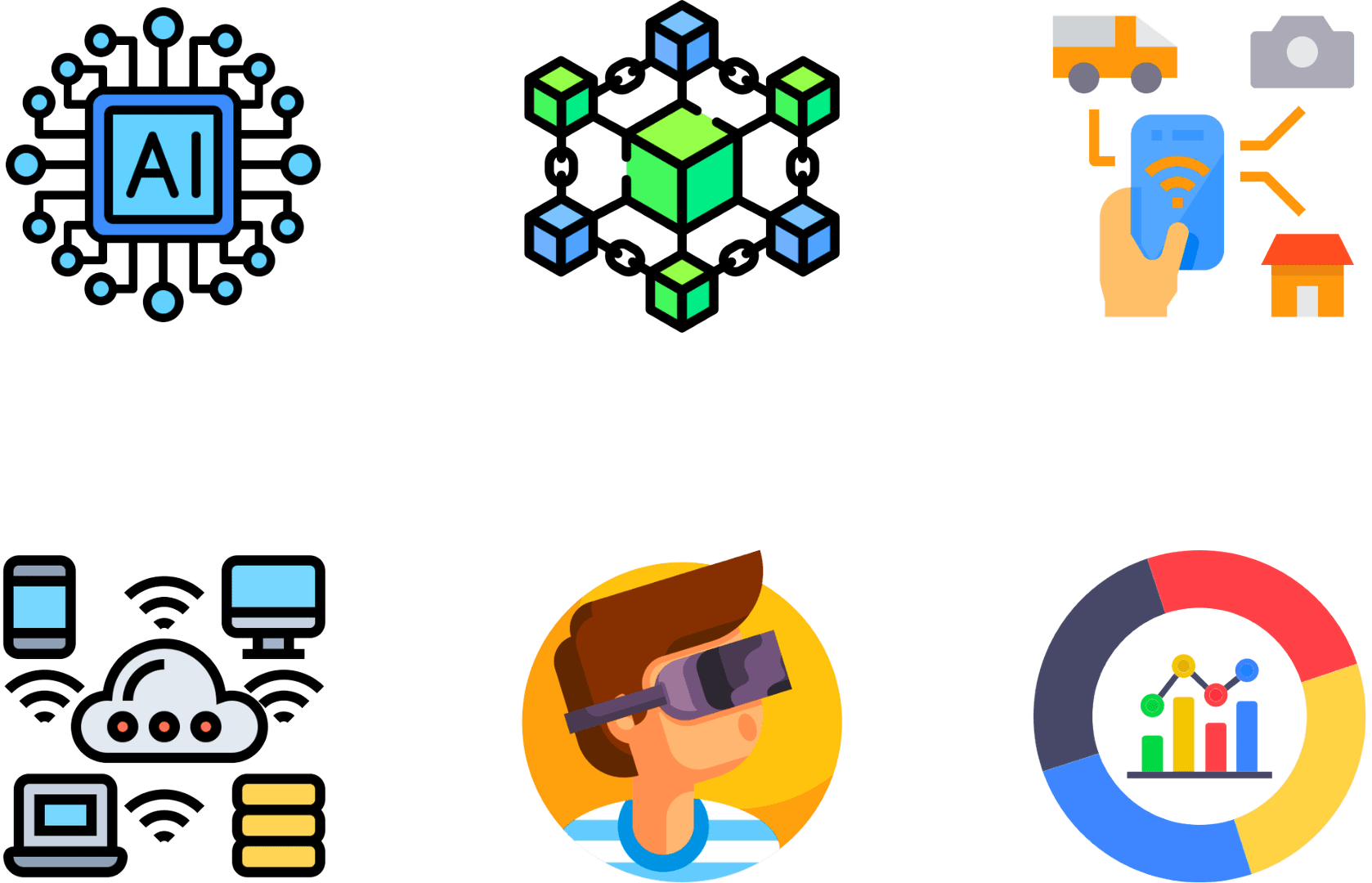
[1] Artificial Intelligence and Machine Learning
Artificial Intelligence (AI) and Machine Learning (ML) Integration in mobile application development in Germany incurs considerable costs. AI and ML are used as ways to augment user experiences through the incorporation of intelligent features, such as chatbots, personalized recommendations, and predictive text. In Germany, where the landscape of technology is quite advanced, the integration of AI/ML can be dynamic, ranging from a low to moderate range of cost, depending on the application complexity. The cost would therefore range between approximately €30,000 and over €100,000 ($30,746 to over $102,487) on average. Some variables that might change this include the size of the app, the need for some custom-built AI models, or the level of expertise in app developers. A developer might use specialized frameworks that require a corresponding investment in cloud-based machine learning services, contributing to additional expenses.
[2] Blockchain Technology
Another high investment area would be the integration of blockchain technology with mobile applications in Germany. The benefits blockchain brings along consist of decentralization, transparency, and security, especially for heavy industrial areas such as finance, logistics, and supply chain management. The typical cost to integrate blockchain can fall between €40,000 and €150,000 ($41,600 to $154,800), depending on the specific application requirements and the number of features that are integrated, such as smart contracts or cryptographic protocols. The German market is known to be very secure and private regarding data, and hence, the developers have to make sure the encryption standards are strong, which in turn will increase the costs.
[3] Internet of Things
One of the leading fields in the creation of mobile apps is IoT for healthcare, manufacturing, and home automation. Including IoT in the mobile apps in Germany will require significant investments in special hardware, networking, and security features. The average cost to integrate IoT technologies into a mobile application ranges from €50,000 to €200,000 ($51,243 to $204,350). This price is influenced by factors such as the number of devices to be connected, data management systems, and real-time monitoring capabilities, among others. Additionally, IoT apps need regular updates to ensure compatibility with new versions of IoT devices and sensors, adding costs to be carried on about maintenance.
[4] Cloud Computing
Scalability, flexibility, and reduced infrastructure costs have brought a revolution to mobile app development through cloud computing. In Germany, the price of integrating data storage, processing power, or application hosting into a cloud-based service can be anywhere between €20,000 and €80,000 ($20,497 to $81,740) depending on the type of cloud service provider and level of integration needed. The type of cloud used also determines the price: public, private, or hybrid. Generally, businesses prefer the leading cloud platforms, such as Amazon Web Services (AWS), Microsoft Azure, or Google Cloud, which carry licensing fees and extra costs for APIs and data management services. In addition, for businesses located in the European Union, it is more challenging to comply with strict data protection regulations, like GDPR, which may add additional costs to implement cloud-based solutions.
[5] AR/VR/XR
Mobile applications related to AR, VR, and XR are increasingly developing because of these new technologies in entertainment, retail, and educational applications. It will cost anywhere from €40,000 to €200,000 ($41,600 to $204,350) in Germany to integrate these innovative technologies depending upon the complexity of the app. The price consists of 3D model developments, the creation of immersive experiences in their entirety, and the integration of specialized hardware such as VR headsets or AR glasses. The development process may also require expertise in graphic design, user experience (UX) design, and motion tracking.
[6] Data Analytics and Reporting
Data analytics and reporting are two of the most important pieces used in contemporary mobile apps, enabling businesses to make informed decisions through actionable insights. The cost to add these functionalities in German mobile apps is between €25,000 and €100,000 ($25,553 to $102,487), depending on the level of analytics. Integration involves adding tools for real-time data collection, doing trend analysis, and creating customizable reporting dashboards. The benefits of third-party analytics systems, such as Google Analytics or Mixpanel, then include the fact that they are cost-effective but always imply recurring subscription fees. Naturally, the cost also depends on the German regulatory context because of data protection regulations and the need to be compliant with the GDPR at all times.
Some Hidden Mobile App Development Costs to Consider
[1] App Store Fees
Launching an app is not only about the development process but also about the cost of publishing it to platforms like Apple App Store and Google Play Store. Apple charges a yearly developer fee of €101 ($99), whereas Google Play asks for a one-time payment of €25 ($25). Also, the stores take a percentage of the revenue generated by your app. In-app purchases and subscriptions have a range of 15-30%. At first, these fees might appear very minor; however, if you’re going to scale your app or offer premium features, the cost adds up over time.
[2] App Maintenance and Updates
After the app is live, regular updates are necessary to fix bugs, enhance security, and keep up with evolving operating systems. Failure to maintain your app could lead to crashes, security vulnerabilities, and a poor user experience, driving users away. Ongoing maintenance can cost anything from 15-20% of the initial cost per year depending on the complexity of your app.
[3] Backend Infrastructure and Hosting
Many mobile apps require cloud storage, databases, and backend servers to run properly. Services such as AWS, Firebase, and Microsoft Azure charge according to usage, so your costs will rise with your user base. Failure to take this into account may lead to some unexpected expenses if your app experiences a sudden traffic spike. Estimating hosting needs correctly and optimizing server usage will help control the costs.
[4] Third-Party API Integration Costs
Your app is most likely going to rely on third-party APIs for features such as payment processing (Stripe, PayPal), maps (Google Maps), or analytics (Mixpanel, Firebase). Here again, you’ll have usage-based costs. Many APIs have free tiers, but once you surpass them, the cost can be rather massive. Without these being factored in, you are not prepared for the financial hit if your app becomes famous overnight.
[5] Security and Compliance Costs
The additional costs for maintaining data security and ensuring compliance with regulations like GDPR, HIPAA, or PCI-DSS may creep up on you if your app deals with sensitive information. You might have to encrypt, authenticate securely, and have audits of compliance to reach the extra cost. Data breaches, legal troubles, and reputational damage are more expensive than investing in security upfront.
[6] Marketing and User Acquisition
Even the best apps will fail if not marketed appropriately. App store optimization (ASO), social media ads, influencer marketing, and paid promotions may become unusually pricey quickly. Many developers focus on development costs but end up underestimating the budget to attract or retain users. Your app may not gain much visibility unless it follows a solid marketing approach in crowded marketplaces.
[7] Customer Support and User Engagement
As your app attracts users, it’s essential to establish a system for managing customer inquiries, technical difficulties, and feedback. Although implementing chat support, email assistance, or AI-driven customer service solutions can be expensive, neglecting customer support may result in poor reviews and lower user retention, ultimately jeopardizing your app’s long-term success.
[8] Legal and Licensing Fees
Depending on the type of app, you will need legal help for terms of service, privacy policies, and intellectual property protection. Adding third-party software licenses, font licenses, and media asset licenses might add unforeseen expenses. Many app developers struggle because of lawsuits, fines, or even removal from the app stores because of legal negligence.
Tips for Optimizing Mobile App Development Costs in Germany
[1] Choose the Right Development Approach
The selection of native, hybrid, or cross-platform development determines much of cost optimization. A native app runs faster but does need a codebase for each, iOS, and Android which means more investment. Cross-platform options like Flutter or React Native offer the capability of using the same code base on both sides with reduced time for development, saving costs for developing the same application. Always, you would look at your application’s complexity, performance required, and the ability to scale it in the long term.
[2] Outsource Smartly
In-house hiring can be costly, especially for a startup and small business; outsourcing to skilled developers or agencies in low-cost regions can save costs without compromising on quality. But opting for the lowest possible can go wrong if such developers are inexperienced. Vet potential partners thoroughly, checking their portfolios, client reviews, communication, and smooth collaboration without suggesting ineptitude that increases costs.
[3] Utilize MVP (Minimum Viable Product) Strategy
It can very easily drain the budget to develop a full-featured app right from the beginning. Instead, start with developing a Minimum Viable Product with just the minimum essential features, release it into the market to collect user feedback, and repeat this cycle in iterations to validate the idea, refine functionalities, and avoid wasting your time on unwanted features. Scale the app according to the actual needs of users, reducing wasteful spending and increasing chances for long-term success.
[4] Leverage Open-Source and Third-Party Tools
The app would take longer to develop and hence more expensive because everything would be built from scratch. Open-source libraries, frameworks, and third-party APIs can be used for functionalities such as authentication, payment processing, and analytics. Applications like Firebase, Stripe, and Twilio are scalable at a much smaller cost than building it in-house. Be sure to evaluate pricing structures and limitations, ensuring they work for your app over the long term.
[5] Optimize UI/UX Design
A low-quality design of the user interface (UI) may incur costly revisions and excessive customer acquisition costs. Early investment in intuitive UX design will add to user satisfaction and retention, and future redesigns will not be as costly to do. Rely less on heavy customization of complex designs and instead use pre-built UI components or templates that can speed up development with a great-looking product. An optimal balance between aesthetics and functionality saves both time and money.
[6] Test Early and Continuously
Bug fixing becomes more expensive with the progression of development. Continuous testing throughout the development cycle might catch issues early, reducing pricey post-launch fixes. Automated testing tools may speed up and save manual effort, further cutting costs. Quality assurance will then become the core priority to facilitate a smoother launch and fewer expenses in the form of crashes, negative reviews, and user dissatisfaction.
Choose a Comprehensive Mobile App Development Process in Germany
Stage 1: Ideation and Requirement Gathering
This phase transforms a spark of thought into a concrete concept. Brainstorming meetings with the stakeholders, interviews with the market, and research determine the true purpose of your mobile app. They do this by working closely together as developers, designers, and business strategists to collect in-depth requirements; define user personas; and find features unique to the brand. The process is deeply human-centered, listening to potential users, understanding their pain points, and envisioning innovative solutions that align with both business objectives and user needs.
Stage 2: Planning
At the next stage of a solidified idea, it becomes time to do careful planning. This phase of the whole project roadmap encompasses setting timelines and milestones and planning all the necessary resource allocation for a project. In this respect, the type of development methodology will be appropriate- whether it’s Agile, Scrum, or Waterfall structuring workflow and allowing all team members to understand how each one would be involved. Good planning not only addresses the risk and budget concerns but also defines a clear strategy for turning the initial concept into a scalable successful product.
Stage 3: Designing and Prototyping
Designing and prototyping will bring the app into focus, where creativity blends with functionality. Here, the designer will be able to create interactive mockups and wireframes that embody the interface and experience of an app – creating an intuitive and aesthetic navigation system. Prototypes are early models that stakeholders and users can use to visualize the product, give feedback on it, and suggest how it could be improved. This is an iterative methodology that promotes a space conducive to collaboration where design decisions are iteratively refined upon real-world usability insight for the benefit of an engaging and user-friendly final product.
Stage 4: Development and Coding
The conceptual designs transform into functional software during the development and coding stage. Developers write rock-solid, defect-free codes, integrating the front-end user interactions with back-end operations to ensure seamless performance across various devices and platforms. This phase often follows an agile process wherein the code is built and reviewed in iterative sprints, encouraging continuous improvement and quick adjustments. The collaboration between coders, system architects, and QA testers is important because it ensures that the architecture of the app is scalable, secure, and optimized for performance.
Stage 5: Testing and Debugging
Rigorous testing and debugging play an important role for the sake of ensuring a good quality, reliable mobile application right before launching the application. Several testing methods will be executed here, namely, unit testing, integration testing, performance testing, and acceptance testing by users for the eradication of bugs and inconsistencies during the testing phase. It is about refining the user experience and the performance of the app under diverse conditions while finding errors; feedback from both beta users and internal testers must be analyzed thoroughly to make the process of debugging iterative and a very collaborative exercise to deliver the best product.
Stage 6: Launch and Deployment
When complete testing is done, an app is ready for launching and deploying. In this stage, app store submissions are completed, platform-specific guidelines are met, and a strategic release plan is coordinated. Typically, deployment is accompanied by marketing initiatives and user onboarding strategies to ensure that the target audience knows the new app’s existence and its benefits. The launch phase is the final stage of hard work, but it requires close coordination among developers, marketers, and support teams for a successful transition from the development to the live operation phase.
Stage 7: Post-Launch Maintenance and Support
Post-launch maintenance and support are important to succeed long term. The monitoring goes on with the collection of feedback from the users as well as with frequent updates for relevance and smooth functioning. Issues are tackled during the period with ongoing support that provides enhancements for features, the adoption of evolving market trends, and changes according to technology trends. This phase should focus on user experience, as the application has to remain safe, secure, and competitive within a constantly evolving digital world.
How to Select a Mobile App Development Company in Germany
The choice of a mobile application development company in Germany can be life or death for your business. As there are numerous options, it is critical to assess possible partners at different levels: expertise, communication, and support. One of the companies that stands out in this competitive industry is Next Olive Technologies. With more than 12 years of experience and 200+ skillful developers specializing in the design of mobile apps, it is one of the leading service providers in this region. There are some primary concerns while finalizing a good mobile application development company in Germany, such as:
[1] On-Time Delivery of the Project
The most critical factor when choosing a mobile app development company is the timely delivery of projects. Delays lead to missed market opportunities and increased costs. A reliable company should have a well-defined project management system that ensures smooth workflow and deadline adherence. Then there’s Next Olive, a firm dedicated to on-time delivery, using agile methodology and efficient planning to see your application reach the market on time. Their team prioritizes the project timelines without quality compromise to get businesses ahead in the game.
[2] End-to-end communication with the Client
Clear and continuous communication is necessary between the development team and the client to achieve a project. A company that keeps the client constantly posted on every stage of development ensures transparency and alignment with business objectives. Next Olive shines in this area, delivering end-to-end communication that provides regular progress reports to the client, interactive feedback sessions, and real-time collaboration. It leverages advanced project management tools with informational relevance in building a product that meets the expectations of the end-user.
[3] Post-Launch Support
The launch of an app on mobile is only the starting point. Continuous updates, bug fixes, and improvements ensure that it functions at its optimal level. A professional app development company should ensure that the app is functional, secure, and updated after launch. Next Olive offers post-launch support to make sure the apps are working smoothly, up-to-date, and free from issues. The team ensures businesses scale and improve their apps without technical interruptions.
[4] Experienced Developers
The success of a mobile application is enhanced by the experience of a development team. Professional developers bring innovation, efficiency, and best practices in the industry to the table. Next Olive boasts 200+ highly experienced mobile app developers with abilities in cutting-edge technologies like AI, IoT, blockchain, and cloud-based solutions. With their experience, they can build robust, user-friendly, and scalable applications for any business need. They have deep knowledge of many industries and produce apps that fit market trends and customer expectations.
[5] Client-Focused Approach
A company that cares for its customers’ satisfaction will more likely be able to develop a product that fulfills the business needs as well as those of users. The greatest mobile app development companies focus on learning client requirements, doing full-scale research, and providing custom-made solutions. The next approach used by Next Olive is client-centered, collaborating closely with businesses to make their dream come into being. They always emphasize user experience, security, and scalability for all applications that get added to their clients’ businesses. They stand strong in customer success and hence, are good at the business of developing mobile applications.
Conclusion
In conclusion, developing a mobile application in Germany is a dynamic process that is highly strategic, and it calls for careful planning the right expertise, and a well-structured approach. The general investment depends on the complexity of the app, the technologies applied, and the skill level of the development team. While the ecosystem in Germany for tech and high-skilled professionals is well represented, there must be a balance on quality, functionality, and budget to yield optimal results. Compliance with data protection regulations, scalability, and user experience should be kept in mind throughout the development process. The right choice of development partner is essential to ensure efficiency, innovation, and long-term success. By focusing on essential features, leveraging modern technologies, and following an agile development process, businesses can create high-performing mobile applications that stand out in Germany’s competitive digital landscape.
Frequently asked questions (FAQs)
Next Olive is the leading mobile app development company that provides its mobile app development services in Berlin, Hamburg, Munich, Cologne, and other parts of Germany. The company has over 12 years of experience and over 200 expert mobile app developers. Besides, the company also offers services in the USA, UK, Australia, Saudi Arabia, Israel, and over 20 other countries as well.
The cost of mobile app development in Germany depends upon multiple factors such as size, type, and complexity. Here is a general breakdown of mobile app development costs:
- Basic Application: Approximately €4,857 to €38,862 ($5,000 to $40,000)
- Medium-Sized Application: Approximately €38,862 to €97,156 ($40,000 to $100,000)
Large-Sized Application: Approximately €97,156 to over €242,891 ($100,000 to over $250,000)
The time required to fully develop an application in Germany depends upon factors such as size, complexity, and type of application.
- Basic or Simple App: 2 to 3 Months
- Medium-complexity App: 3 to 7 Months
- Enterprise-Level App: 7 to over 12 Months
Next Olive provides various types of app development services such as:
- Android App Development
- iOS App Development
- On-Demand App Development
- Flutter App Development
- Hybrid App Development

